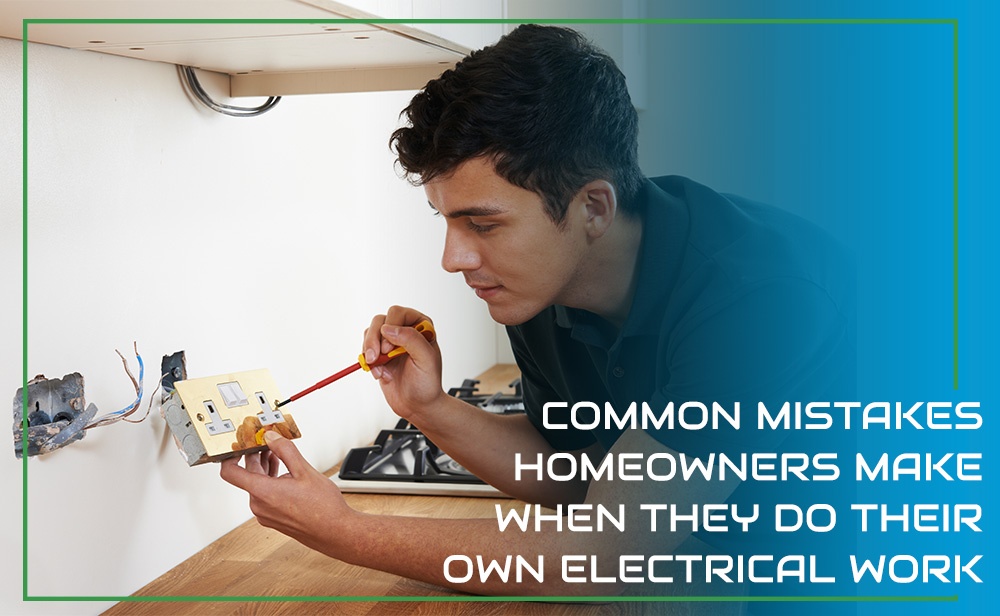Common Mistakes Homeowners Make When They Do Their Own Electrical Work

While DIY electrical projects seem fun and exciting, there are several complexities and potential risks involved, which, if overlooked, can give rise to dangerous situations and compromise the safety of your home. To help you avoid mistakes and errors that could lead to hazardous situations and endanger you and your loved ones, Newtech Electrical Services Ltd. has compiled a list of the most common mistakes homeowners make when they do their own electrical work.
1. Incorrectly installing kitchen counter receptacles
15A Kitchen Counter Receptacles are of the “Split Receptacle” configuration. This means that the tab has been broken on the LINE (gold) side of the receptacle, allowing for two circuits at one receptacle. When replacing kitchen counter receptacles yourself, please be sure to BREAK THE TAB on the LINE (gold) side ONLY! This will prevent a dead short, a common problem that we troubleshoot.
2. Stripping wires
Many people who do their own wiring strip too much insulation off wires when making connections. You should never strip more than 1/2” or so back, otherwise it is likely that a hot wire will come in contact with either a neutral, a ground, or metal in a junction box or device box.
3. Leaving wires too short
When entering wires into junction boxes and devices boxes, it is good practice to leave a minimum of 4 to 6 inches of each wire in the box. This allows for easy access for troubleshooting, and in the event that a wires break off of a device or becomes scored, there is plenty of wire to make a new connection.
4. Resetting GFCIs
There are many receptacles throughout the home or workplace that are GFCI protected. In many cases, when a circuit is tripped due to a short or a ground fault, people will go to the electrical panel to check the breakers. If you have lost power to a circuit and ensured that all breakers are on in the panel, check all GFCI receptacles to ensure that they have been reset as well. Always push the TEST button followed by the RESET button.
5. Swapping out circuit breakers
We see many cases where someone will replace a lower rating circuit breaker for one with a higher rating in order to prevent a circuit from tripping. NEVER do this! A circuit breaker is in place for one reason only - to protect the wire that it feeds. Increasing the allowable amperage of a circuit can certainly lead to a fire in the wall. If you have a circuit that is tripping frequently, it’s best to try and identify and move around heavy loads that are causing the over-draw.
6. Improper grounding
Many people who replace devices and/or light fixtures themselves will ignore the ground wire (bare copper OR green insulated). This is a safety hazard, grounding is in place for a reason, and any object near an electrical system needs to be properly grounded to reduce the risk of electrical shock when making contact.
To avoid these and other mistakes related to electrical work, reach out to Newtech Electrical Services Ltd. We have an immense amount of experience in providing excellent residential, commercial, light industrial, service installation or upgrade, and other electrical services to an expansive range of clients. Our team strives to give our clients ideal solutions to their electrical problems and ensures clientele satisfaction. We serve across Surrey, Langley, Abbotsford, Chilliwack, Mission, Coquitlam, and Vancouver, British Columbia.
To learn more about the services we offer, please click here. If you have any questions about how we can help you, get in touch with us by clicking here.